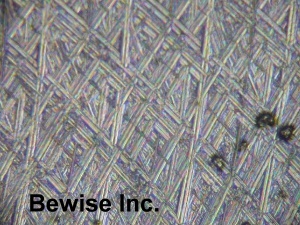ISO
classification |
Grade |
Work Material |
Cutting Type |
Working Conditions |
| P |
P01 |
cast steel, steel |
Precise turning, precise boring |
Apply to cutting high-speed steel and small feed, or require the dimensional accuracy and good surface of the work piece, and work under no vibration state of processing. |
| P10 |
cast steel, steel |
turning, by die cutting, thread cutting |
High ~ middle speed cutting, Small ~ middle milling area, middle feed or under good processing |
| P20 |
cast steel, steel、malleable iron (Long chip) |
Turning, by the die cutting, milling, planning cutting |
Middle speed cutting, middle feed power, the most popular one among P series. Planning feed should be small, with good machining conditions. |
| P30 |
cast steel, steel、malleable iron (Long chip) |
turning, milling, planning |
Low ~ medium-speed cutting, medium ~ high amount of feed, or the surface hardness of work piece with uneven hardness, changes of feeding, and vibration conditions . |
| P40 |
Steel, cast iron with sand hole |
turning, planning |
low-speed cutting, large amount of feed, and under the worst processing conditions |
| P50 |
low to middle tensile strength steel |
turning, planning |
low-speed cutting, large amount of feed, and under the worst processing conditions |
| cast iron with sand hole |
turning, planning |
low-speed cutting, large amount of feed, and under worse processing conditions than P40 |
| M |
M10 |
steel, cast steel, cast iron |
turning |
medium to high-speed cutting, small to medium amount of feed, or under the better processing conditions, for cutting steel and cast iron materials. |
| High manganese steel, Eos Tiantie Gang, special cast iron |
turning |
Medium to high-speed cutting, small to medium amount of feed, or under the better conditions. |
| M20 |
steel, cast steel, cast iron |
turning, planning |
Middle speed milling, medium feed, or under bad processing conditions, for cutting steel and cast iron materials.
|
| Eos Tiantie Gang, special cast iron, high manganese steel |
turning, planning |
Medium speed milling, middle feed,, or cut under a good processing conditions. |
| M30 |
steel, cast steel, cast iron, Oswald Tiantie Gang, special cast iron, heat-resistant steel |
turning, milling, breaking |
Medium speed milling, middle to large amount of feed, or thick rough material and material with sand holes, welding materials, under worse processing conditions than M20. |
| M40 |
cutting steel, non-ferrous metal |
turning, breaking |
High speed cutting, middle to large amount of feed, complex shape of the cutting edge, it’s the M Series most needed toughness cutting processing conditions. |
| K |
K01 |
cast iron |
precision turning, precision honing, fine milling |
High speed cutting, small amount of feed, under good cutting conditions without vibration.
|
| K10 |
chilled cast iron, hard cast iron, hardened steel |
turning |
very low speed cutting, small amount of feed, under good cutting conditions without vibration.
|
| High silicon aluminum alloy, ceramics, asbestos, cardboard, graphite, |
|
Cutting under good cutting conditions without vibration.
|
| cast iron above HB200, malleable iron (long cutting) |
turning, milling, honing cutting, broaching, reaming |
Middle speed cutting, small amount of feed, widely used for K series, or under vibration-free machining conditions. |
| chilled steel |
turning |
low-speed cutting, small amount of feed or under cutting conditions of smaller vibration. |
| silicon-aluminum alloy, hard copper alloy, hard rubber, glass, porcelain, plastics |
|
under cutting conditions of smaller vibration. |
| K20 |
Cast iron belowHB220 |
turning, milling, planning, reaming, drilling |
Middle speed cutting, medium to large amount of feed, used for general machining or request of the powerful the wayward processing conditions |
| Non ferrous metal materials |
|
Request under powerful the wayward processing conditions
|
| K30 |
low tensile strength steel, low hardness cast iron |
turning, milling, planning |
low speed cutting, small amount of feed, under better processing conditions.
|
| K40 |
non-ferrous metal of low hardness materials, wood |
turning, milling, planning |
cutting under the conditions worse than K30 |












































